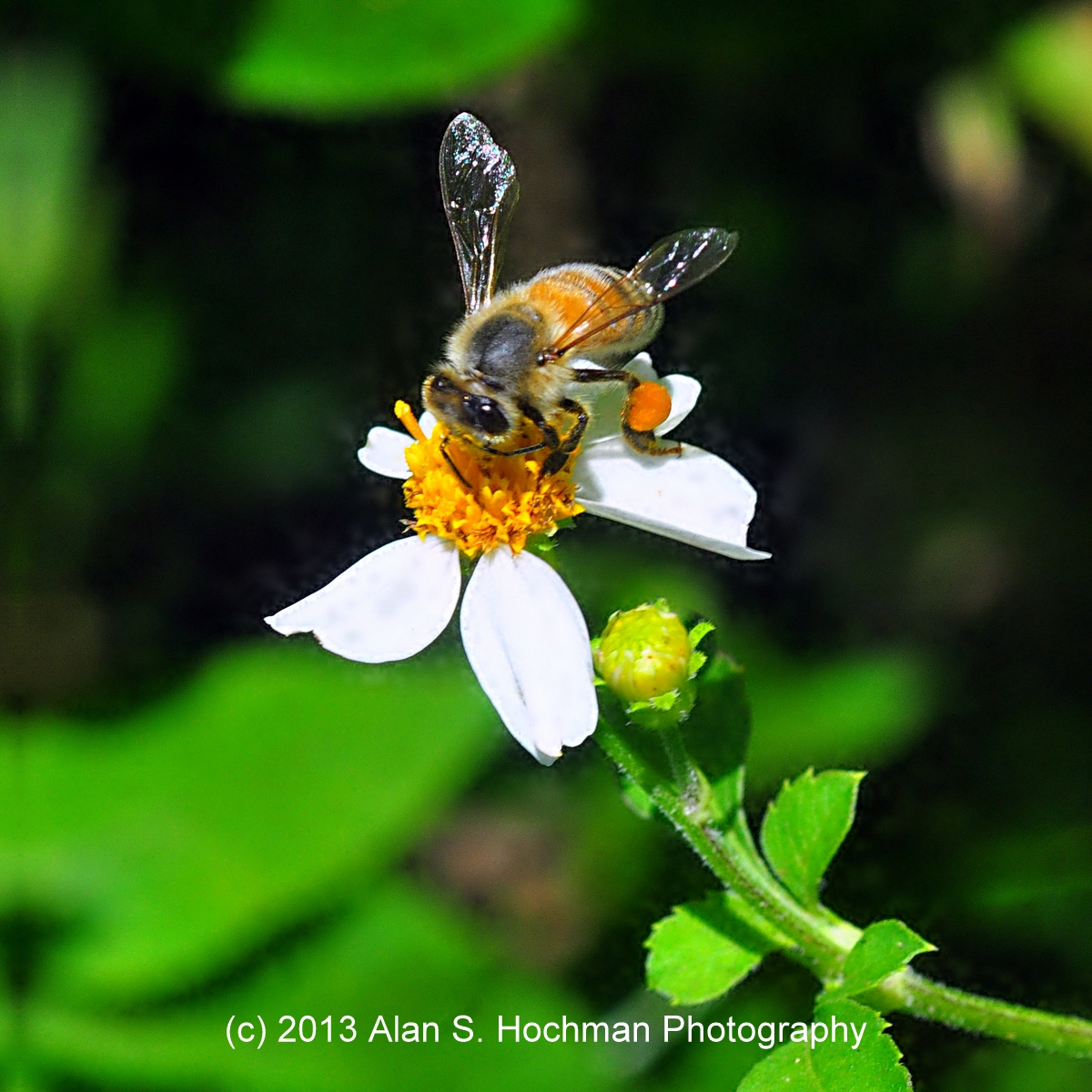WILDLIFE PHOTOGRAPHY – ARCH CREEK MEMORIAL PARK – NORTH MIAMI, FL
This photograph is of a honeybee gathering pollen from a Spanish Needle, taken at Arch Creek Memorial Park, in North Miami, Florida. The gear used in this photo of a honeybee was a Nikon D90 camera body attached to a 60mm 2.8 AF Micro Nikkor lens.
Honey bees (or honeybees) are a subset of bees in the genus Apis, primarily distinguished by the production and storage of honey and the construction of perennial, colonial nests out of wax. Honey bees are the only extant members of the tribe Apini, all in the genus Apis. Currently, of these insects, only seven recognized species of honey bee with a total of 44 subspecies, though historically, anywhere from six to eleven species have been recognized. Honey bees represent only a small fraction of the approximately 20,000 known species of bees. Some other types of related bees produce and store honey, but only members of the genus Apis are true honey bees.
Drones
Males or drones are typically haploid, having only one set of chromosomes. They are produced by the queen if she chooses not to fertilize an egg; or by a non-fertilized laying worker. Diploid drones may be produced if an egg is fertilized but is homozygous for the sex-determination allele. Drones take 24 days to develop and may be produced anywhere from summer through autumn. Drones have large eyes used to locate queens during mating flights. Drones do not have a sting.
Workers
Workers are female and have two sets of chromosomes. They are produced from an egg that the queen has selectively fertilized from stored sperm. Workers typically develop in 21 days. A typical colony may contain as many as 60,000 worker bees. Workers exhibit a wider range of behaviors than either queens or drones. Their duties change upon the age of the bee in the following order (beginning with cleaning out their own cell after eating through their capped brood cell): feed brood; receive nectar; clean hive; guard duty; and foraging. Some workers engage in other specialized behaviors, such as “undertaking” (removing corpses of their nestmates from inside the hive).
Workers have morphological specializations: including the corbiculum or pollen basket, abdominal glands that produce beeswax, brood-feeding glands, and barbs on the sting. Under certain conditions (for example, if the colony becomes queen-less), a worker may develop ovaries.
Queens
Queen honey bees, like workers, are female. They are created at the decision of the worker bees by feeding a larva only royal jelly throughout its development, rather than switching from royal jelly to pollen once the larva grows past a certain size. Queens are produced in oversized cells and develop in only 16 days. Queens have a different morphology and behavior from worker bees. In addition to the greater size of the queen, she has a functional set of ovaries, and a spermatheca, which stores and maintains sperm after she has mated. The sting of queens is not barbed like a worker’s sting, and queens lack the glands that produce beeswax. Once mated, queens may lay up to 2,000 eggs per day. Queens produce a variety of pheromones that regulate behavior of workers, and helps swarms track the queen’s location during the migratory phase.
Subject Photo exif Data
Camera Make and Model NIKON D90
Photo taken on October 12, 2013, 9:12 am
Focal Length 60mm
Shutter Speed 1/160
Aperture @ƒ/8

Beautiful picture!!!
Márcia, Thank you 🙂
Wonderful all your work!!!
Thank you so much for sharing your art and your love for nature. 🙂